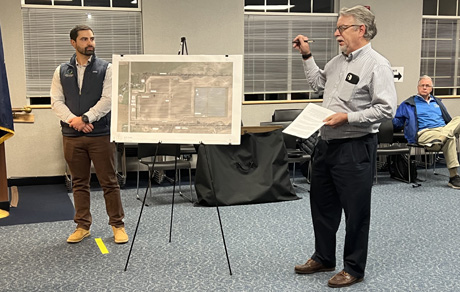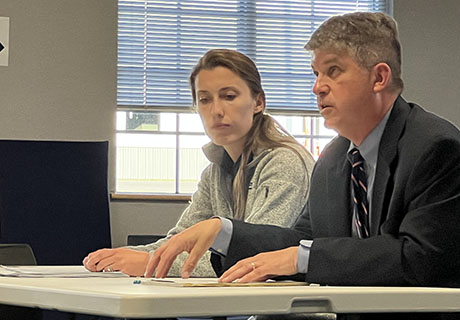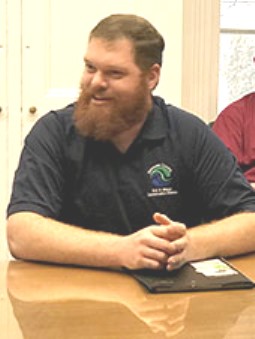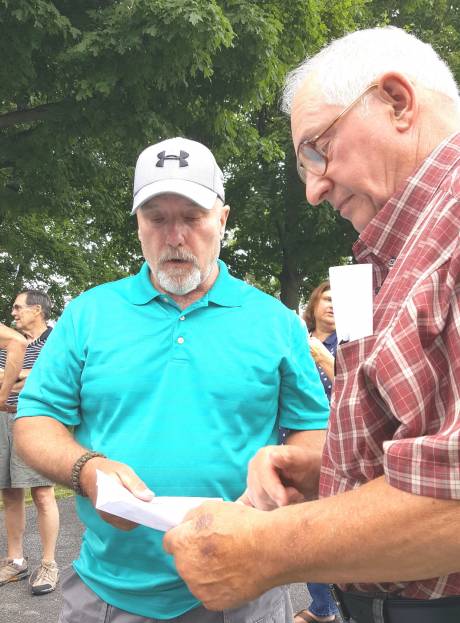Local farmer says NYS making it harder to grow crops, and solar is better deal for low-yield land

Farmers aren't converting profitable cropland into solar farms, said Tim Call, a Batavia businessman and farmer, after the Batavia Planning Board heard a proposal from New Leaf Energy to install a 5-megawatt project on 20 acres he owns at 7757 Oak Orchard Road.
There's good money to be made off of good land, according to Call, but it's become harder to turn a profit on low-yield land.
New York's new labor laws have a lot to do with turning marginal land into unprofitable land.
"Farmers are getting so good at producing on good acreage," Call said. "You don't need all the acreage that's there. The bad ground is not going to produce a lot of good things. It's just like the dairy farmers. If they have cows that are producing 40,000 pounds of milk a year, and they have one that's producing 10,000 pounds, why are you going to keep feeding those 10,000 pounds? You cull that one and get ones that are going to produce the most and give you the best return. You can't afford to farm bad farmland. It's just not profitable."
The state's increase in minimum wage and new overtime rules for farmworkers are causing farmers to re-evaluate what land they keep in production and what crops they grow, Call said. Out are low-yield acreage and crops that are labor intensive, such as cabbage, and other vegetables. Corn, wheat, and soybeans are favored because those crops don't need to be weeded or picked by hand. The harvest can be fully mechanized.
Last year, New York adjusted the overtime threshold for farmworkers to 40 hours per week. That's made it harder to hire workers who can migrate to other states with more worker-friendly laws, Call said.
"The overtime rule is really crippling everybody," Call said. "Plus the minimum wage that's out there. When we're trying to compete against other states where the minimum wage is $7, $8 and our minimum wage is $14.20, almost double, and then you can't get the farm or the migrants to come in and work because they can't get the hours that they want. It's just crippling. How do you compete?"
The proposed solar farm came before the board on Tuesday so the board could appoint itself lead agency for the environmental review, which it did. The board will later be asked to vote on a proposed special use permit for the project.
This new solar installation will go on an 85.5-acre parcel that is just south of Daws Corners, which already contains a 15-acre solar farm on the back portion, along with some wetlands left undisturbed by either project. The two projects will cover 39.6 percent of the parcel, which is below the allowable 50 percent threshold.
New Leaf will plant about 153 trees to help visually screen the array.
The topsoil from the project area will be stored in a berm along the front of the property, which will make it available to redistribute on the parcel once the solar array is decommissioned. The land could potentially, then, become farmland again.
Call noted during an interview with The Batavian that a solar installation doesn't permanently take the acreage out of agricultural use.
"The thing is, if it doesn't work out, you take the panels off, you pull it out of the ground, you pull the wire up, and you go back to farming," Call said. "You can't do that with some of these other things that they're doing. This isn't blacktop. It's not concrete, you know. You don't have a 40-by-40 pad that's 10 feet down in the ground. You can go back to farming."
Photo: Will Nieves, project developer for New Leaf Energy, and Mark Kenward, project engineer with Erdman Anthony, make a presentation for a solar project on behalf of property owner Tim Call, in the background. Photo by Howard Owens.






